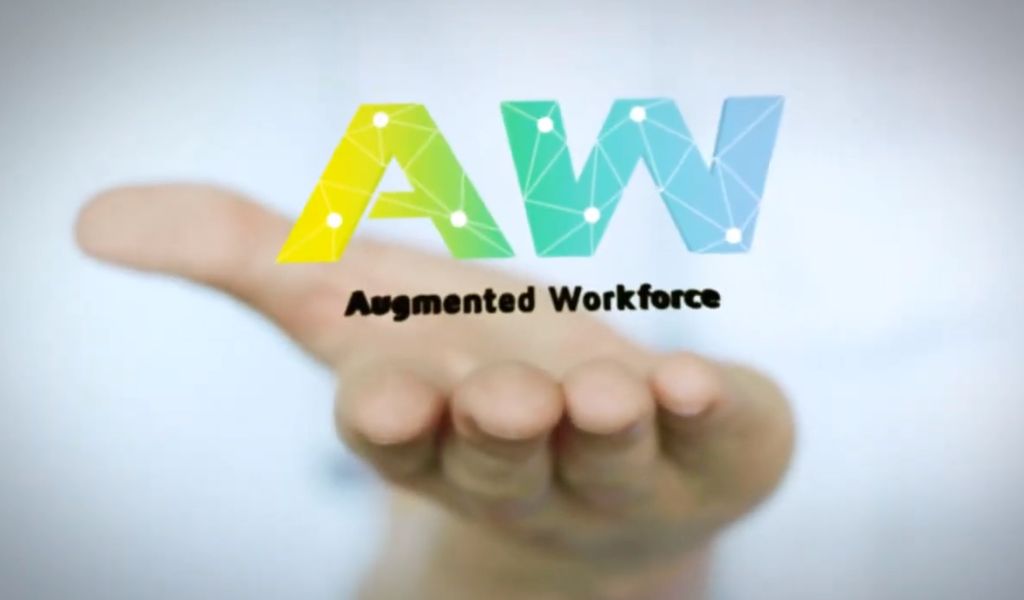In the unfolding narrative of technological advancement, an emerging concept is gaining momentum. An idea that challenges our traditional understanding of work. It’s the era of the augmented workforce – a future where technology doesn’t replace humans but empowers them. This article explores how the concept of an augmented workforce is revolutionizing industries, driving innovation, and shaping our collective future.
Unraveling the Augmented Workforce
The term ‘augmented workforce’ denotes a synergistic environment where human intellect and artificial intelligence (AI) coalesce. Here, the role of technology isn’t to substitute human resources but to amplify their abilities, enhancing productivity, creativity, and decision-making processes.
The underpinnings of an augmented workforce lie in advanced technologies such as AI, machine learning, robotics, and automation. These tools perform monotonous, routine tasks, liberating humans to focus on strategic thinking, creativity, and decision-making – the realms where human intelligence outshines AI.
This fusion of human creativity and technological prowess is disrupting traditional work models, catalyzing new opportunities, and inspiring new approaches to problem-solving and value creation.
The Augmented Workforce Across Industries

The imprint of an augmented workforce is noticeable across diverse sectors, each leveraging technology in unique ways to enhance human potential and streamline processes.
Healthcare: Augmenting Patient Care
AI in healthcare is not a novel concept. Still, the augmentation of healthcare professionals with AI and machine learning tools is revolutionary. Machine learning algorithms can scrutinize medical images and patient data with higher speed and accuracy than their human counterparts. This facilitates early and precise diagnosis, and risk prediction, allowing healthcare professionals to devote more time to patient care and intricate medical procedures.
Moreover, robotics and automation in surgery enable precision beyond human steadiness, reducing complications and recovery time. Meanwhile, virtual reality serves as an effective tool for patient rehabilitation and surgeon training, demonstrating the diverse applications of an augmented workforce in healthcare.
Manufacturing: Enhancing Safety and Productivity
The manufacturing sector, traditionally seen as a pioneer in automation, is now leading the charge in embracing the augmented workforce. Robotic systems perform repetitive, hazardous tasks, enhancing human safety and boosting productivity. Collaborative robots, or ‘cobots’, work alongside humans, not only on assembly lines but also in roles like quality control.
Predictive analytics and machine learning algorithms identify maintenance needs before equipment fails, minimizing downtime. Simultaneously, augmented reality assists in complex assembly tasks and worker training, showcasing the transformative potential of an augmented workforce in manufacturing.
Retail: Personalizing the Shopping Experience
In retail, AI algorithms are augmenting both the shopping experience and business operations. Personalized recommendations based on customer behavior and preferences lead to enhanced customer engagement and sales.
Automated checkouts expedite transactions, freeing up staff for customer service and other high-value tasks. Behind the scenes, AI-powered analytics offer insights into inventory management and supply chain optimization, proving the versatility of the augmented workforce in the retail landscape.
The Challenges and Opportunities Ahead
While the augmented workforce presents immense opportunities, it also brings forth challenges. Preparing for this new era of work requires a proactive and comprehensive approach.
Upskilling for the Future
Employees need to upskill and reskill to collaborate effectively with AI and automation tools. Employers must cultivate a culture of lifelong learning, investing in training programs that enhance digital literacy, data fluency, and other necessary skills for the future.
Organizations should also foster a mindset of agility and adaptability, essential attributes for navigating the evolving landscape of an augmented workforce.
Redefining Business Models
To fully leverage the benefits of an augmented workforce, organizations need to redefine their business models and operational processes. Job roles need to be reassessed, workflows redesigned, and performance metrics redefined to align with this new working paradigm.
Moreover, businesses need to ensure ethical considerations keep pace with technology. Privacy, data security, and fairness must be ingrained in AI algorithms, and businesses must be transparent in their use of AI and automation.
The Future of Work: A Collaborative Symphony
The rise of the augmented workforce heralds an exciting era of innovation and growth. Technology is no longer seen as a threat to human jobs but as an ally that amplifies human potential.
The future of work isn’t a dystopian landscape where robots reign supreme; instead, it’s a harmonious symphony where humans and machines collaborate for collective success. It’s not about humans versus machines, but humans with machines.
By embracing the augmented workforce, we stand at the precipice of incredible opportunities. We can harness this potent fusion of human intellect and artificial intelligence to solve complex problems, drive innovation, and shape a future that’s not just technologically advanced, but also humane and inclusive.
The augmented workforce is not a distant fantasy—it’s here, and it’s time we embrace it and leverage its potential to the fullest. After all, the future is not something that happens to us—it’s something we create.
Conclusion
The rise of the augmented workforce signals an exciting era of innovation and productivity. As we step into this future, it’s crucial to remember that technology is not a replacement for human workforce, but a powerful ally that can help us accomplish more. By embracing this shift, we can create a synergistic workplace where humans and machines work together for collective success.
Remember, the future of work is not humans versus machines, but humans working with machines. Let’s embrace the augmented workforce and harness its potential to shape a better future.
